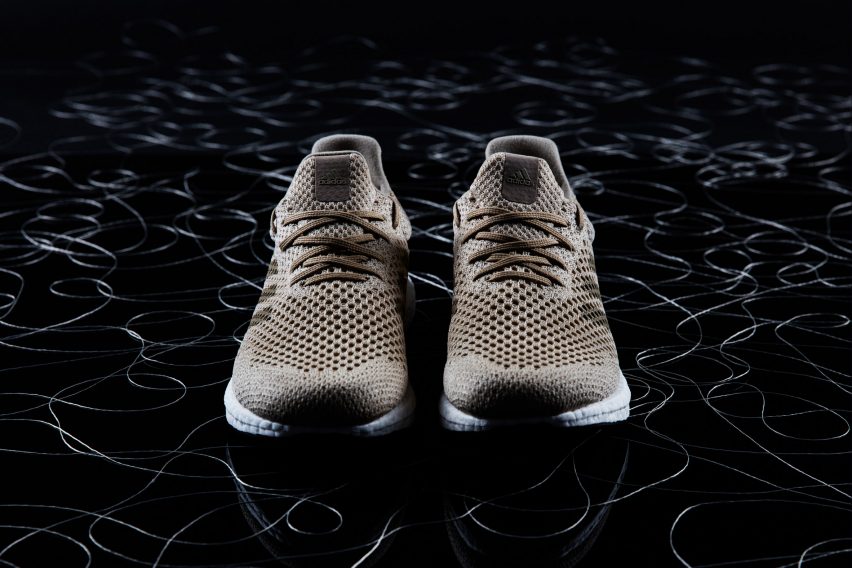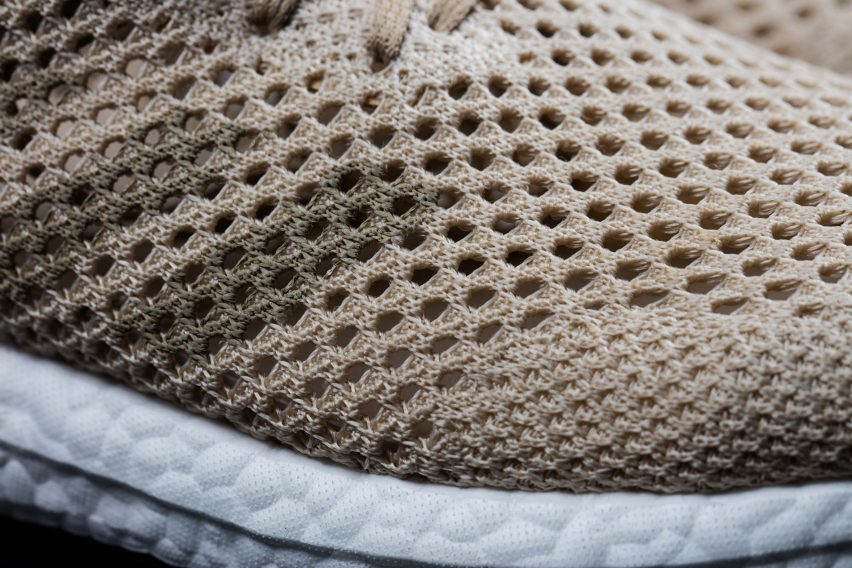
Adidas' latest Futurecraft trainers "achieve an unrivalled level of sustainability"
Adidas has unveiled the latest pair of trainers from its Futurecraft series, featuring uppers made from 100 per cent biodegradable material.
The Adidas Futurecraft Biofabric trainers are constructed from Biosteel fibres, which replicate natural silk.

The fibres, made by German biotechnology company AMSilk, are completely biodegradable. They are also said to be 15 per cent lighter than other conventional synthetic fibres, and Adidas claims they have the "potential to be the strongest fully natural material available".

The concept shoe was unveiled at the Biofabricate Conference in New York yesterday.
During the event, James Carnes – Adidas' vice-president of strategy creation – described the shoes as another step in the company's commitment to "redefining the sports industry".

"This concept represents premium innovation," he said. "By using Biosteel fibre in our products, we have achieved an unrivalled level of sustainability."
"We are moving beyond closed loop and into an infinite loop – or even no loop at all. This is a pioneering stride forward beyond sustainability into a new territory of bionic innovation."

Adidas' release of the Futurecraft Biofabric shoe follows a number of other models it made to push the boundaries of sneaker innovation.
These include the Futurecraft Tailored Fibre trainers, constructed through an industrial sewing technique used to manufacture heated car seats, and a version of the brand's Superstar trainer featuring a seamless upper made from a single piece of leather.
Earlier this month, the brand revealed it would be making 1,000,000 pairs of its ocean plastic shoes in 2017, with the ultimate ambition being to eliminate virgin plastic from its supply chain.

Speaking to Dezeen last year, Adidas executive board member for global brands Eric Liedtke said that the company aims to use design to challenge its arch-rival Nike as the dominant brand in the American market.
"I need to overcompensate in America from a design point of view," he said. "I need to get this right [in the USA], because we're not having the success we are in Europe right now."